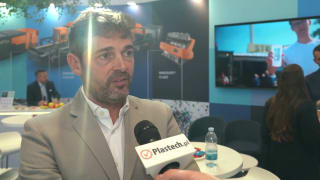
The official opening of Områ, Norway's new national fine-sorting facility for plastic packaging waste, marks a significant expansion of the country’s recycling infrastructure. Jointly owned by Tomra (65 percent) and Plastretur (35 percent), the plant near Oslo is designed to receive all types of household plastic packaging, including material that previously had no alternative to incineration.
With an annual processing capacity of 90,000 tonnes, Områ converts mixed plastic packaging into uniform polymer fractions prepared for downstream recycling. The facility applies sensor-based sorting to separate incoming streams into up to ten monofractions, including polyethylene (PE), polypropylene (PP), polyethylene terephthalate (PET), polystyrene (PS) and others, enabling higher recovery and improved recycling rates.
"Områ is more than a facility, it is a missing link in Europe's circular economy," said Tove Andersen, President and CEO of Tomra. "This facility has the capacity to receive and transform all of Norway's household plastic packaging waste into recyclable fractions, essentially closing the loop for plastics. It is a cornerstone piece of infrastructure providing reliable offtake for mixed waste sorting facilities, and can help recover more resources from source separated material."
Located at Holtskogen, the site will operate as a dependable offtake solution for municipalities and waste management companies considering automated mixed waste sorting. This approach is presented as an important lever to increase recycling without relying solely on household source separation.
Under the forthcoming PPWR, the European Union requires at least 55 percent of plastic packaging waste to be recycled by 2030. Today, approximately one third of Norway's plastic packaging is recycled, with most of the remainder incinerated. "Områ gives municipalities and the entire value chain a clear signal, there is now a scalable, high-quality route for plastic packaging," said Karl Johan Ingvaldsen, CEO of Plastretur. "It provides the infrastructure needed to meet EU recycling targets and supports our shared ambition to build a truly circular plastics economy."
The opening ceremony brought together more than 300 participants, including municipal representatives, recyclers, brand owners, NGOs and policy experts, to inaugurate a facility positioned as part of Norway's and Europe's resource infrastructure.
Facility capabilities and role in circular systems
Områ's fine-sorting line produces discrete polymer fractions suitable for high-value recycling, improving the quality and consistency of feedstock for recyclers. By creating reliable offtake for both mixed waste sorting and source separated streams, the plant is intended to support higher capture rates from households and unlock material that would otherwise be lost to energy recovery.

The installation applies Tomra's sensor-based technologies to identify and separate plastics at scale. The focus on monomaterial output is designed to support recycling of common packaging polymers such as PE, PP, PET and PS, alongside other fractions.
About Områ
Områ is a joint venture between Tomra Systems ASA, with a 65 percent share, and Plastretur AS, with a 35 percent share. The facility is located at Holtskogen, approximately 45 minutes from Oslo, and has an annual processing capacity of 90,000 tonnes. Using Tomra's sensor-based sorting technology, Områ separates mixed plastic streams into up to ten distinct polymer fractions for recycling.
The name Områ, pronounced "ohm-rau", was chosen to reflect the project's purpose. In Norwegian it conveys "to think about" and "to take care of", highlighting a commitment to resource stewardship and deliberate decision-making.




